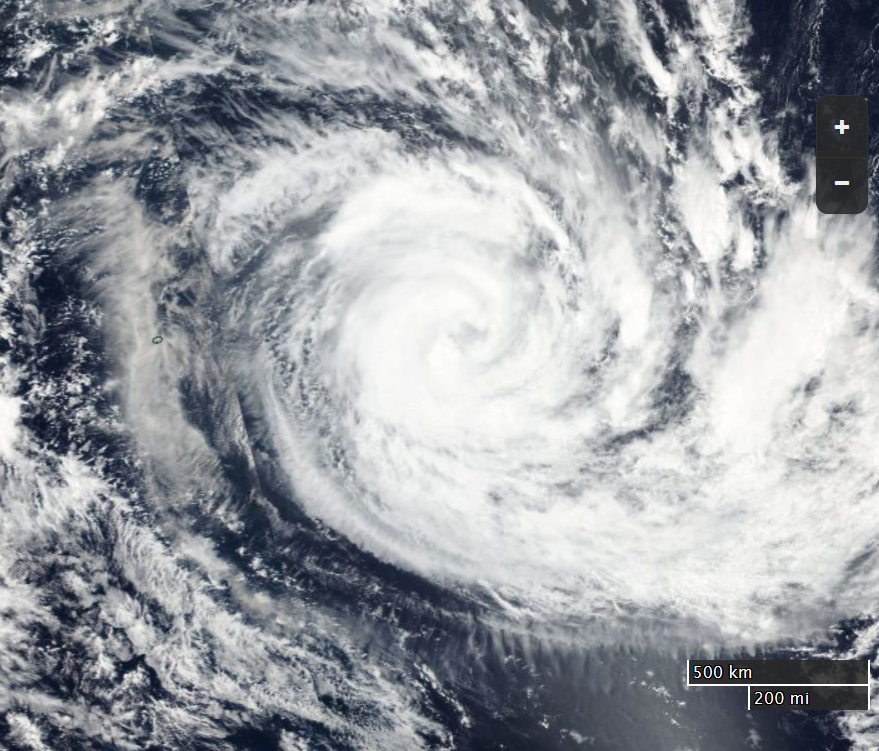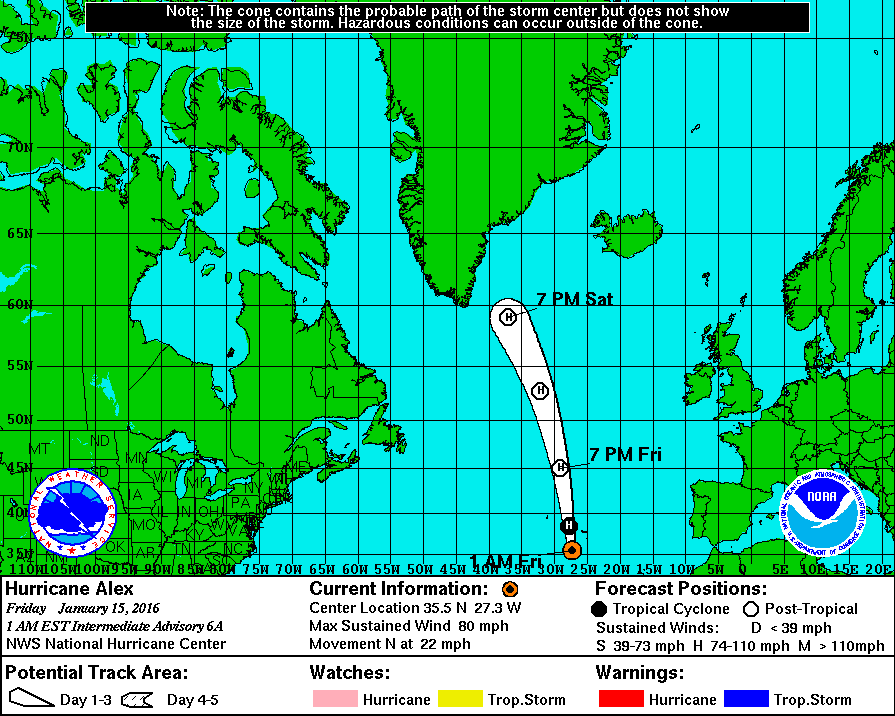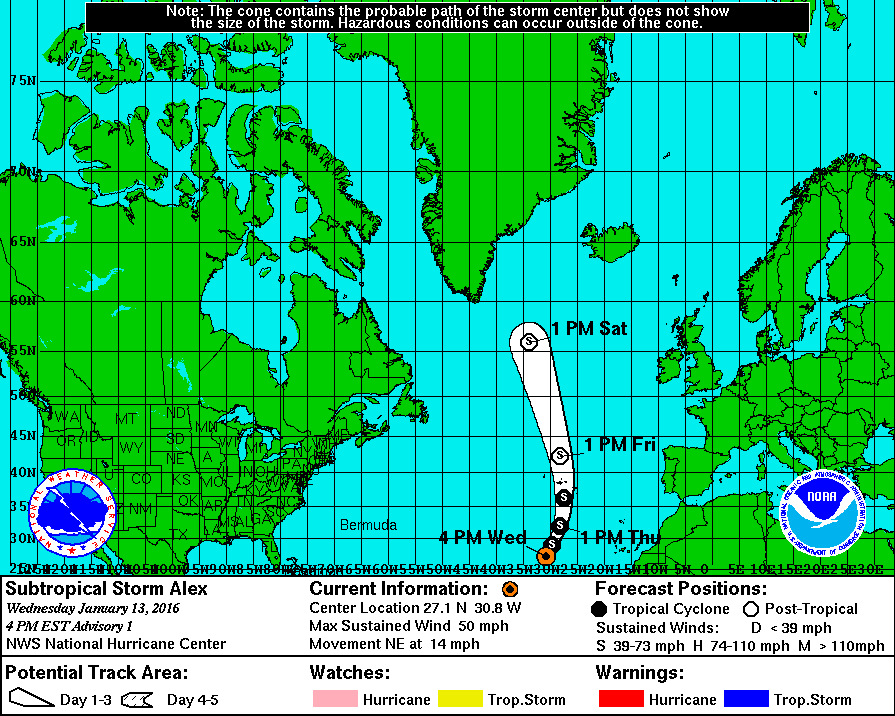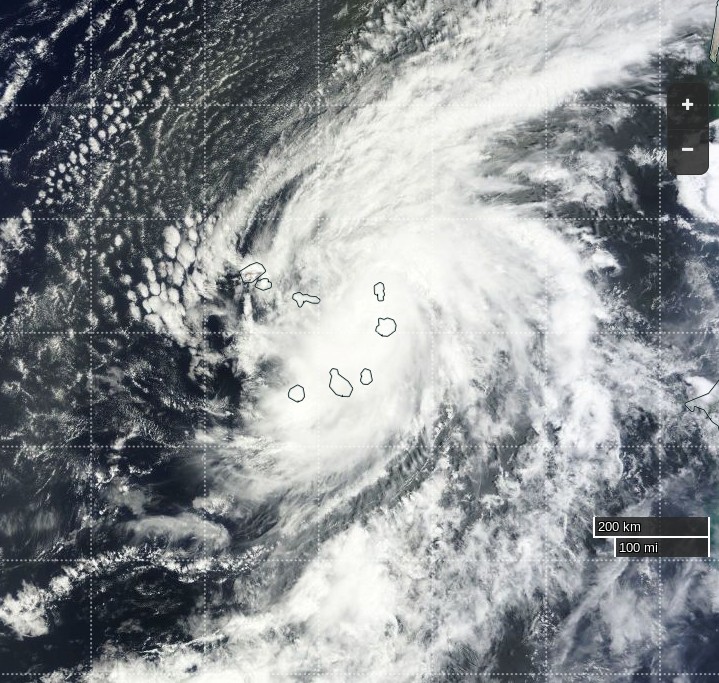January 23, 2016
Cyclone Corentin Forms in South-West Indian Ocean
We've already reported on unusually early hurricanes in the North Atlantic and North Pacific. Now comes news of the first Southern Hemisphere cyclone of 2016. Yesterday the Joint Typhoon Warning Center in Hawaii reported that Cyclone Corentin had developed hurricane force winds in the South-West Indian Ocean. Of course it's summer in the Southern Hemisphere, so this event is unusual for a different reason. Corentin is the first storm of the 2015-16 season to reach category 1 strength, and has done so later than in previous years.
Here's the JTWC's current forecast track for Corentin, showing Reunion Island well to the west of the cyclone:
Here's an extract from the JTWC's latest bulletin:
230300Z POSITION NEAR 22.0S 71.7E.
TROPICAL CYCLONE 08S (CORENTIN), LOCATED APPROXIMATELY 866 NM SOUTH OF DIEGO GARCIA, HAS TRACKED SOUTHWARD AT 08 KNOTS OVER THE PAST SIX HOURS.
ANIMATED ENHANCED INFRARED SATELLITE IMAGERY DEPICTS CONVECTIVE BANDS WRAPPING TIGHTLY INTO A LOW-LEVEL CIRCULATION CENTER.
A 222310Z SSMIS 91 GHZ IMAGE DEPICTS A WELL-DEFINED MICROWAVE EYE FEATURE WITH CONVECTION COMPLETELY SURROUNDING THE CENTER. PGTW AND KNES DVORAK INTENSITY ANALYSES YIELDED T-NUMBERS OF 4.5 AND SUPPORT THE INITIAL INTENSITY
OF 75 KNOTS.TC CORENTIN REMAINS IN AN AREA FAVORABLE FOR SLIGHT INTENSIFICATION WITH LOW (5 TO 10 KNOTS) VERTICAL WIND SHEAR (VWS) A STRONG POLEWARD OUTFLOW CHANNEL AND HIGH (28 DEG C) SEA SURFACE TEMPERATURES (SSTS)
TC 08S IS EXPECTED TO REACH PEAK INTENSITY BY TAU 12 THEN BEGIN A SLOW WEAKENING TREND THROUGH THE REMAINDER OF THE FORECAST PERIOD IN RESPONSE TO INCREASED VWS AND DECREASING SSTS. BY TAU 120, TC CORENTIN WILL BEGIN EXTRA-TROPICAL TRANSITION AS IT INTERACTS WITH A MID-LATITUDE FRONTAL SYSTEM AND UPPER-LEVEL TROUGH.
and here's how Corentin looked from NASA's Suomi satellite yesterday:
Filed under Climate by
























